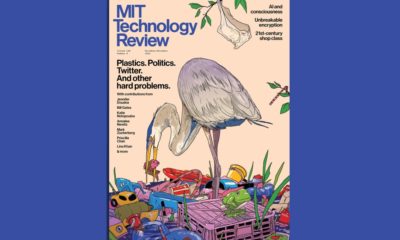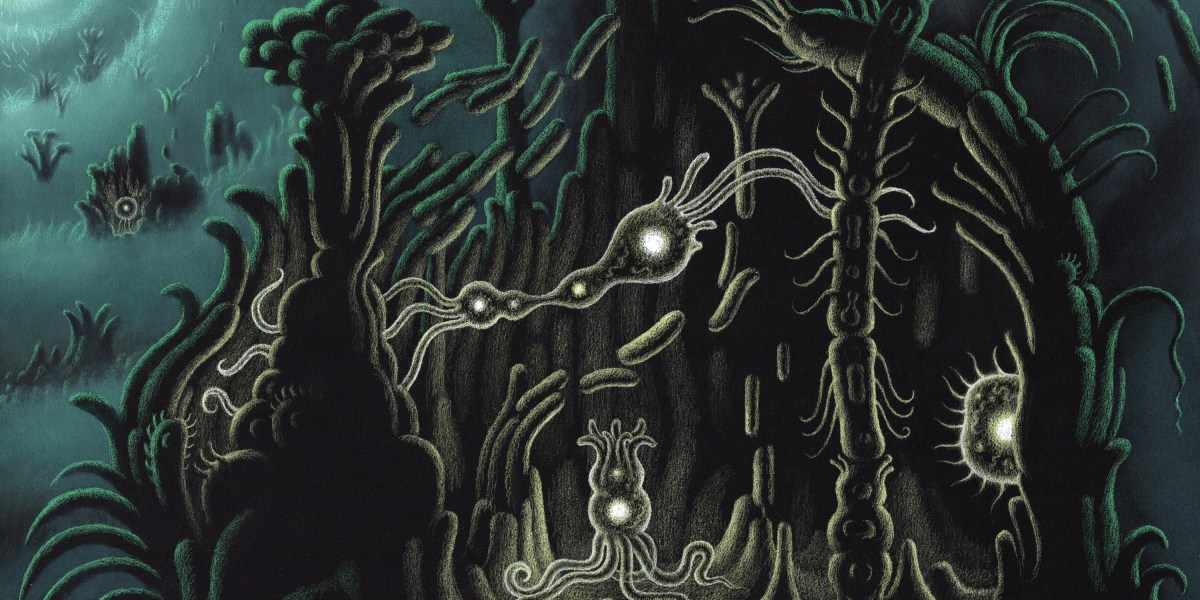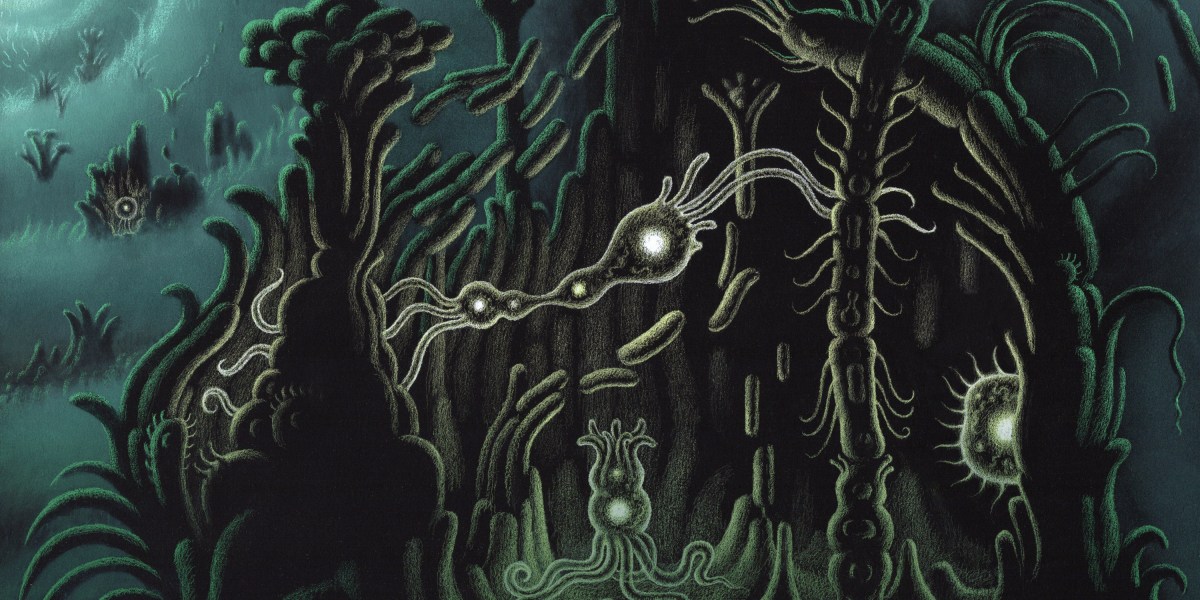Tech
The Biggest Questions: What is death?
Published
5 months agoon
By
Drew Simpson
Just as birth certificates note the time we enter the world, death certificates mark the moment we exit it. This practice reflects traditional notions about life and death as binaries. We are here until, suddenly, like a light switched off, we are gone.
But while this idea of death is pervasive, evidence is building that it is an outdated social construct, not really grounded in biology. Dying is in fact a process—one with no clear point demarcating the threshold across which someone cannot come back.
Scientists and many doctors have already embraced this more nuanced understanding of death. As society catches up, the implications for the living could be profound. “There is potential for many people to be revived again,” says Sam Parnia, director of critical care and resuscitation research at NYU Langone Health.
Neuroscientists, for example, are learning that the brain can survive surprising levels of oxygen deprivation. This means the window of time that doctors have to reverse the death process could someday be extended. Other organs likewise seem to be recoverable for much longer than is reflected in current medical practice, opening up possibilities for expanding the availability of organ donations.
To do so, though, we need to reconsider how we conceive of and approach life and death. Rather than thinking of death as an event from which one cannot recover, Parnia says, we should instead view it as a transient process of oxygen deprivation that has the potential to become irreversible if enough time passes or medical interventions fail. If we adopt this mindset about death, Parnia says, “then suddenly, everyone will say, ‘Let’s treat it.’”
Moving goalposts
Legal and biological definitions of death typically refer to the “irreversible cessation” of life-sustaining processes supported by the heart, lungs, and brain. The heart is the most common point of failure, and for the vast majority of human history, when it stopped there was generally no coming back.
That changed around 1960, with the invention of CPR. Until then, resuming a stalled heartbeat had largely been considered the stuff of miracles; now, it was within the grasp of modern medicine. CPR forced the first major rethink of death as a concept. “Cardiac arrest” entered the lexicon, creating a clear semantic separation between the temporary loss of heart function and the permanent cessation of life.
Around the same time, the advent of positive-pressure mechanical ventilators, which work by delivering breaths of air to the lungs, began allowing people who incurred catastrophic brain injury—for example, from a shot to the head, a massive stroke, or a car accident—to continue breathing. In autopsies after these patients died, however, researchers discovered that in some cases their brains had been so severely damaged that the tissue had begun to liquefy. In such cases, ventilators had essentially created “a beating-heart cadaver,” says Christof Koch, a neuroscientist at the Allen Institute in Seattle.
These observations led to the concept of brain death and ushered in medical, ethical, and legal debate about the ability to declare such patients dead before their heart stops beating. Many countries did eventually adopt some form of this new definition. Whether we talk about brain death or biological death, though, the scientific intricacies behind these processes are far from established. “The more we characterize the dying brain, the more we have questions,” says Charlotte Martial, a neuroscientist at the University of Liège in Belgium. “It’s a very, very complex phenomenon.”
Brains on the brink
Traditionally, doctors have thought that the brain begins incurring damage minutes after it’s deprived of oxygen. While that’s the conventional wisdom, says Jimo Borjigin, a neuroscientist at the University of Michigan, “you have to wonder, why would our brain be built in such a fragile manner?”
Recent research suggests that perhaps it actually isn’t. In 2019, scientists reported in Nature that they were able to restore a suite of functions in the brains of 32 pigs that had been decapitated in a slaughterhouse four hours earlier. The researchers restarted circulation and cellular activity in the brains using an oxygen-rich artificial blood infused with a cocktail of protective pharmaceuticals. They also included drugs that stopped neurons from firing, preventing any chance that the pig brains would regain consciousness. They kept the brains alive for up to 36 hours before ending the experiment. “Our work shows there’s probably a lot more damage from lack of oxygen that’s reversible than people thought before,” says coauthor Stephen Latham, a bioethicist at Yale University.
In 2022, Latham and colleagues published a second paper in Nature announcing that they’d been able to recover many functions in multiple organs, including the brain and heart, in whole-body pigs that had been killed an hour earlier. They continued the experiment for six hours and confirmed that the anesthetized, previously dead animals had regained circulation and that numerous key cellular functions were active.
“What these studies have shown is that the line between life and death isn’t as clear as we once thought,” says Nenad Sestan, a neuroscientist at the Yale School of Medicine and senior author of both pig studies. Death “takes longer than we thought, and at least some of the processes can be stopped and reversed.”
A handful of studies in humans have also suggested that the brain is better than we thought at handling a lack of oxygen after the heart stops beating. “When the brain is deprived of life-sustaining oxygen, in some cases there seems to be this paradoxical electrical surge,” Koch says. “For reasons we don’t understand, it’s hyperactive for at least a few minutes.”
In a study published in September in Resuscitation, Parnia and his colleagues collected brain oxygen and electrical activity data from 85 patients who experienced cardiac arrest while they were in the hospital. Most of the patients’ brain activity initially flatlined on EEG monitors, but for around 40% of them, near-normal electrical activity intermittently reemerged in their brains up to 60 minutes into CPR.
Similarly, in a study published in Proceedings of the National Academy of Sciences in May, Borjigin and her colleagues reported surges of activity in the brains of two comatose patients after their ventilators had been removed. The EEG signatures occurred just before the patients died and had all the hallmarks of consciousness, Bojigin says. While many questions remain, such findings raise tantalizing questions about the death process and the mechanisms of consciousness.
Life after death
The more scientists can learn about the mechanisms behind the dying process, the greater the chances of developing “more systematic rescue efforts,” Borjigin says. In best-case scenarios, she adds, this line of study could have “the potential to rewrite medical practices and save a lot of people.”
Everyone, of course, does eventually have to die and will someday be beyond saving. But a more exact understanding of the dying process could enable doctors to save some previously healthy people who meet an unexpected early end and whose bodies are still relatively intact. Examples could include people who suffer heart attacks, succumb to a deadly loss of blood, or choke or drown. The fact that many of these people die and stay dead simply reflects “a lack of proper resource allocation, medical knowledge, or sufficient advancement to bring them back,” Parnia says.
Borjigin’s hope is to eventually understand the dying process “second by second.” Such discoveries could not only contribute to medical advancements, she says, but also “revise and revolutionize our understanding of brain function.”
Sestan says he and his colleagues are likewise working on follow-up studies that seek to “perfect the technology” they have used to restore metabolic function in pig brains and other organs. This line of research could eventually lead to technologies that are able to reverse damage—up to a point, of course—from oxygen deprivation in the brain and other organs in people whose hearts have stopped. If successful, the method could also expand the pool of available organ donors, Sestan adds, by lengthening the window of time doctors have to recover organs from the permanently deceased.
If these breakthroughs do come, Sestan emphasizes, they will take years of research. “It’s important that we not overexaggerate and promise too much,” he says, “although that doesn’t mean we don’t have a vision.”
In the meantime, ongoing investigations into the dying process will no doubt continue to challenge our notions of death, leading to sea changes within science and other realms of society, from the theological to the legal. As Parnia says: “Neuroscience doesn’t own death. We all have a stake in it.”
Rachel Nuwer is a freelance science journalist who regularly contributes to the New York Times, Scientific American, Nature and more. Her latest book is I Feel Love: MDMA and the Quest for Connection in a Fractured World. She lives in Brooklyn.
You may like
-


The Download: what is death, and jailbreaking generative AI
-


The Biggest Questions: Why is the universe so complex and beautiful?
-


The Biggest Questions: Is it possible to really understand someone else’s mind?
-


The Biggest Questions: How did life begin?
-


The Biggest Questions: Are we alone in the universe?
-


Tackling our biggest problems
Tech
The hunter-gatherer groups at the heart of a microbiome gold rush
Published
4 months agoon
12/19/2023By
Drew Simpson
The first step to finding out is to catalogue what microbes we might have lost. To get as close to ancient microbiomes as possible, microbiologists have begun studying multiple Indigenous groups. Two have received the most attention: the Yanomami of the Amazon rainforest and the Hadza, in northern Tanzania.
Researchers have made some startling discoveries already. A study by Sonnenburg and his colleagues, published in July, found that the gut microbiomes of the Hadza appear to include bugs that aren’t seen elsewhere—around 20% of the microbe genomes identified had not been recorded in a global catalogue of over 200,000 such genomes. The researchers found 8.4 million protein families in the guts of the 167 Hadza people they studied. Over half of them had not previously been identified in the human gut.
Plenty of other studies published in the last decade or so have helped build a picture of how the diets and lifestyles of hunter-gatherer societies influence the microbiome, and scientists have speculated on what this means for those living in more industrialized societies. But these revelations have come at a price.
A changing way of life
The Hadza people hunt wild animals and forage for fruit and honey. “We still live the ancient way of life, with arrows and old knives,” says Mangola, who works with the Olanakwe Community Fund to support education and economic projects for the Hadza. Hunters seek out food in the bush, which might include baboons, vervet monkeys, guinea fowl, kudu, porcupines, or dik-dik. Gatherers collect fruits, vegetables, and honey.
Mangola, who has met with multiple scientists over the years and participated in many research projects, has witnessed firsthand the impact of such research on his community. Much of it has been positive. But not all researchers act thoughtfully and ethically, he says, and some have exploited or harmed the community.
One enduring problem, says Mangola, is that scientists have tended to come and study the Hadza without properly explaining their research or their results. They arrive from Europe or the US, accompanied by guides, and collect feces, blood, hair, and other biological samples. Often, the people giving up these samples don’t know what they will be used for, says Mangola. Scientists get their results and publish them without returning to share them. “You tell the world [what you’ve discovered]—why can’t you come back to Tanzania to tell the Hadza?” asks Mangola. “It would bring meaning and excitement to the community,” he says.
Some scientists have talked about the Hadza as if they were living fossils, says Alyssa Crittenden, a nutritional anthropologist and biologist at the University of Nevada in Las Vegas, who has been studying and working with the Hadza for the last two decades.
The Hadza have been described as being “locked in time,” she adds, but characterizations like that don’t reflect reality. She has made many trips to Tanzania and seen for herself how life has changed. Tourists flock to the region. Roads have been built. Charities have helped the Hadza secure land rights. Mangola went abroad for his education: he has a law degree and a master’s from the Indigenous Peoples Law and Policy program at the University of Arizona.
Tech
The Download: a microbiome gold rush, and Eric Schmidt’s election misinformation plan
Published
4 months agoon
12/18/2023By
Drew Simpson
Over the last couple of decades, scientists have come to realize just how important the microbes that crawl all over us are to our health. But some believe our microbiomes are in crisis—casualties of an increasingly sanitized way of life. Disturbances in the collections of microbes we host have been associated with a whole host of diseases, ranging from arthritis to Alzheimer’s.
Some might not be completely gone, though. Scientists believe many might still be hiding inside the intestines of people who don’t live in the polluted, processed environment that most of the rest of us share. They’ve been studying the feces of people like the Yanomami, an Indigenous group in the Amazon, who appear to still have some of the microbes that other people have lost.
But there is a major catch: we don’t know whether those in hunter-gatherer societies really do have “healthier” microbiomes—and if they do, whether the benefits could be shared with others. At the same time, members of the communities being studied are concerned about the risk of what’s called biopiracy—taking natural resources from poorer countries for the benefit of wealthier ones. Read the full story.
—Jessica Hamzelou
Eric Schmidt has a 6-point plan for fighting election misinformation
—by Eric Schmidt, formerly the CEO of Google, and current cofounder of philanthropic initiative Schmidt Futures
The coming year will be one of seismic political shifts. Over 4 billion people will head to the polls in countries including the United States, Taiwan, India, and Indonesia, making 2024 the biggest election year in history.
Tech
Navigating a shifting customer-engagement landscape with generative AI
Published
4 months agoon
12/18/2023By
Drew Simpson
A strategic imperative
Generative AI’s ability to harness customer data in a highly sophisticated manner means enterprises are accelerating plans to invest in and leverage the technology’s capabilities. In a study titled “The Future of Enterprise Data & AI,” Corinium Intelligence and WNS Triange surveyed 100 global C-suite leaders and decision-makers specializing in AI, analytics, and data. Seventy-six percent of the respondents said that their organizations are already using or planning to use generative AI.
According to McKinsey, while generative AI will affect most business functions, “four of them will likely account for 75% of the total annual value it can deliver.” Among these are marketing and sales and customer operations. Yet, despite the technology’s benefits, many leaders are unsure about the right approach to take and mindful of the risks associated with large investments.
Mapping out a generative AI pathway
One of the first challenges organizations need to overcome is senior leadership alignment. “You need the necessary strategy; you need the ability to have the necessary buy-in of people,” says Ayer. “You need to make sure that you’ve got the right use case and business case for each one of them.” In other words, a clearly defined roadmap and precise business objectives are as crucial as understanding whether a process is amenable to the use of generative AI.
The implementation of a generative AI strategy can take time. According to Ayer, business leaders should maintain a realistic perspective on the duration required for formulating a strategy, conduct necessary training across various teams and functions, and identify the areas of value addition. And for any generative AI deployment to work seamlessly, the right data ecosystems must be in place.
Ayer cites WNS Triange’s collaboration with an insurer to create a claims process by leveraging generative AI. Thanks to the new technology, the insurer can immediately assess the severity of a vehicle’s damage from an accident and make a claims recommendation based on the unstructured data provided by the client. “Because this can be immediately assessed by a surveyor and they can reach a recommendation quickly, this instantly improves the insurer’s ability to satisfy their policyholders and reduce the claims processing time,” Ayer explains.
All that, however, would not be possible without data on past claims history, repair costs, transaction data, and other necessary data sets to extract clear value from generative AI analysis. “Be very clear about data sufficiency. Don’t jump into a program where eventually you realize you don’t have the necessary data,” Ayer says.
The benefits of third-party experience
Enterprises are increasingly aware that they must embrace generative AI, but knowing where to begin is another thing. “You start off wanting to make sure you don’t repeat mistakes other people have made,” says Ayer. An external provider can help organizations avoid those mistakes and leverage best practices and frameworks for testing and defining explainability and benchmarks for return on investment (ROI).
Using pre-built solutions by external partners can expedite time to market and increase a generative AI program’s value. These solutions can harness pre-built industry-specific generative AI platforms to accelerate deployment. “Generative AI programs can be extremely complicated,” Ayer points out. “There are a lot of infrastructure requirements, touch points with customers, and internal regulations. Organizations will also have to consider using pre-built solutions to accelerate speed to value. Third-party service providers bring the expertise of having an integrated approach to all these elements.”
